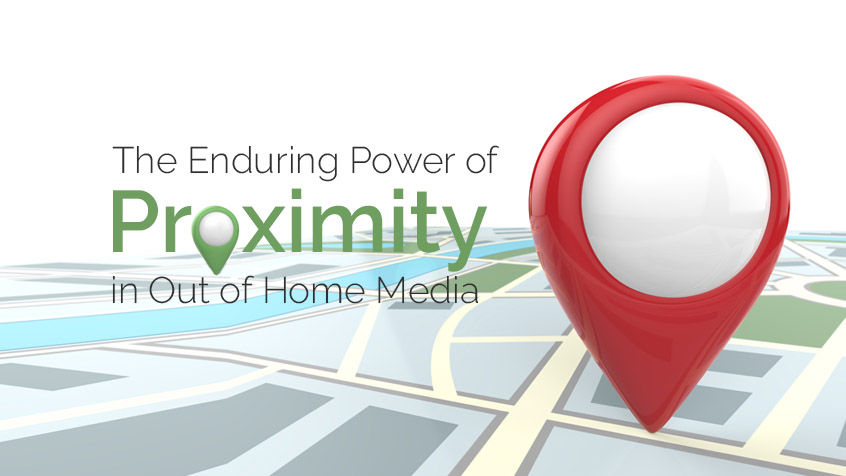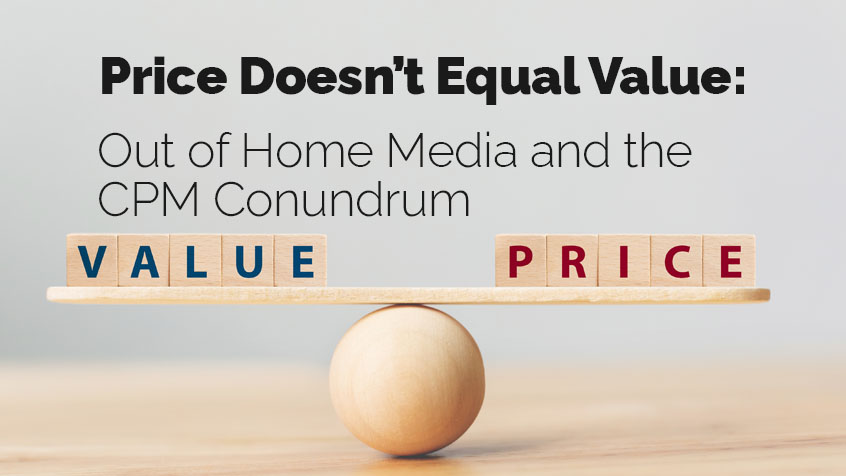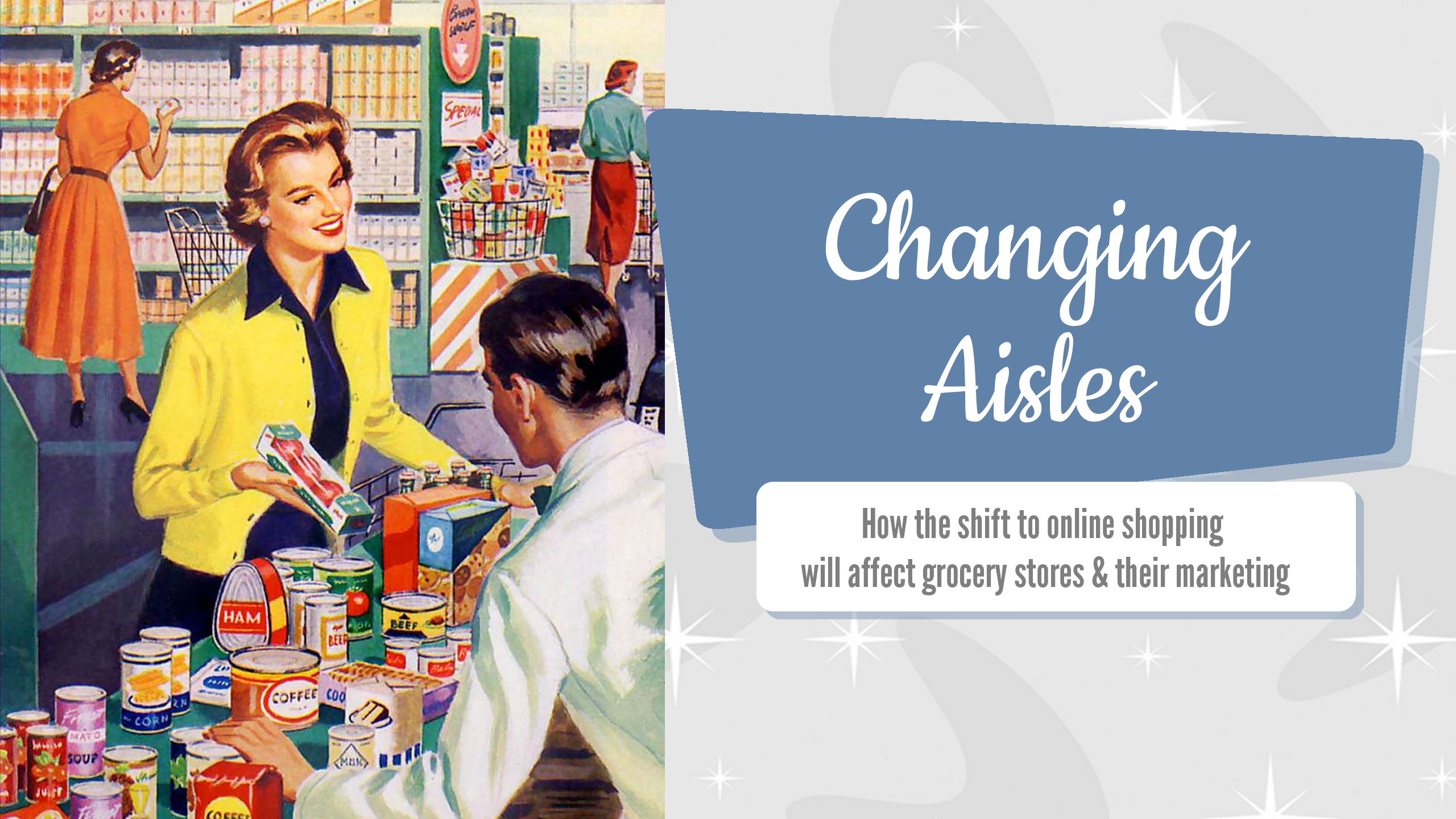“Mobile is accelerating the impact of Out of Home media – not diverting attention. As a partner to mobile, Out of Home is ideally placed to drive instant response or action.” (Source: FEPE/Future Foundation: ‘Always On: Out of Home Lives 2014’)
As we move into 2015, technology is changing the way consumers interact with brands at a historic pace. As that relationship continues to evolve out of home and mobile are poised to become critical partners in the connected consumer’s multi-channel path to purchase.
Increased awareness of out of home.
Mobile connectivity has passed the tipping point, with the overwhelming majority of consumers connected via smartphones. According to a recent Nielsen study, as of the 4th quarter of 2014, over 71% of American consumers now own smart phones. (link)
Conventional wisdom would seem to indicate that all this smartphone usage would be bad for out of home, that people would be focused on their mobile device, reducing the amount of attention spent on out of home media. But the fact is smartphone owners are more likely to notice out of home advertising. A new study (link) shows that approximately 81% of smartphone owners notice some form of outdoor advertising in an average week. This is almost 10% higher than those without smartphones (72%).
Michele Levine, CEO, Roy Morgan Research, says: “It turns out smartphone owners aren’t just walking around with their heads down, peering at screens. Smartphone owners notice more outdoor advertising than others, suggesting that the integration of Outdoor and Digital in marketing campaigns could indeed provide a promising advantage for marketers.” Source: Roy Morgan Single Source (Australia), January 2014 – June 2014.
Out of home drives search.
But connected consumers aren’t just noticing out of home – they are acting on it as well. With the internet in their pocket, out of home media is in a perfect position to prompt immediate action. Out of home can lead directly to search and engagement. In fact “40% of urban consumers have looked up information online immediately as a result of an OOH ad.” (Source: FEPE ‘Always On’)
And the mobile consumer who is in search mode, is a consumer who is also in purchase mode – they are out and about, they have an agenda, and ready to shop. “78% of mobile searches for local business information result in a purchase.” (link)
A point of entry for mobile interaction.
Browsers, Apps, QR Codes, NFC, iBeacons…Smartphones offer a host of different ways for brands to connect, engage, and deliver information to consumers.
But a key element to integrating mobile and out of home is realizing that consumers will always ask “What’s in it for me?”. Why would consumers want to interact with out of home media? Much like any business relationship, studies show the key lies in providing value. A majority of consumers indicated they would be interested in using their smartphone to interact with out of home media that provides them with some benefit. 63% if it enabled them to get coupons or deals by tapping/scanning with their phone, and 56% if they had the chance to win a prize. (Source: FEPE ‘Always On’)
Smartphones also allow consumers to take part in the advertising. By engaging consumers in this way brands can change the dynamic of the interaction, shifting from a one way monologue, to a dialog. In their recent #ShareACoke campaign Coca-Cola used an interactive billboard and “In exchange for sending a text message, a billboard displayed a bottle of Coke with the consumer’s name on it in real time. The campaign generated 110,000 submissions and 820 million impressions.” (link)
As connectivity continues to increase, and mobile browsing becomes faster and easier, consumers are increasingly using their smartphones as an integral part of their shopping experience. They are regularly using their phones to research products and services, and 75% of mobile shoppers have used a mobile coupon. (link) As early as 2012 retailers were beginning to tap into this phenomenon, with activations like grocery retailer Peapod’s virtual grocery stores that allowed consumers to scan products on OOH displays and order them directly from their phone. Last year ecommerce giant Amazon recognized the powerful link between out of home and mobile with their 2014 holiday campaign in the NYC subway. This innovative campaign allowed travelers to shop on an interactive digital kiosk while they waited for the train, and then send product information directly to their phone via a text message or QR code scan. (link)
As the trend away from PC’s and toward mobile browsing continues it’s clear that mobile commerce is not a passing fad, 66% of time spent with online retail in September 2014 occurred on mobile devices, web and mobile measurement firm comScore Inc. reports. (link) As mobile connectivity continues to increase experts clearly expect the amount of time spent with mobile retail to increase as well. “We expect the trend of mobile-enabled commerce to continue throughout the 2014 holiday shopping season and into 2015 and beyond.” said Samuel Mueller, chief executive officer at Scandit. (link)
Where do we go from here?
The majority of consumers now have immediate access to the web wherever they go, and out of home is the one media that is everywhere. From billboards, to mall kiosks, to digital formats, out of home is ready to be the portal to mobile engagement for integrated, multi-channel media plans.
“Mobile Living is providing impetus not impediment to Out of Home content hungry consumers with ‘portals’ in their hands.” (Source: FEPE ‘Always On’)





